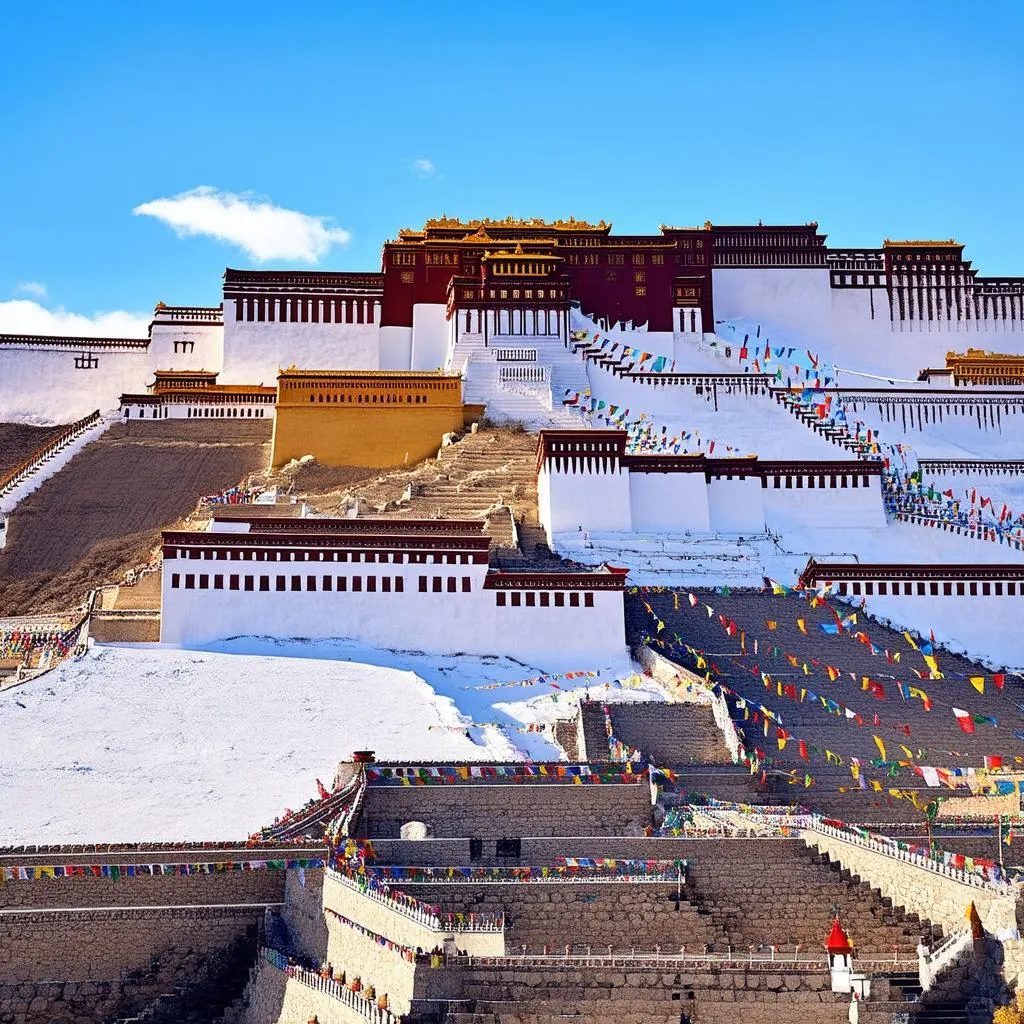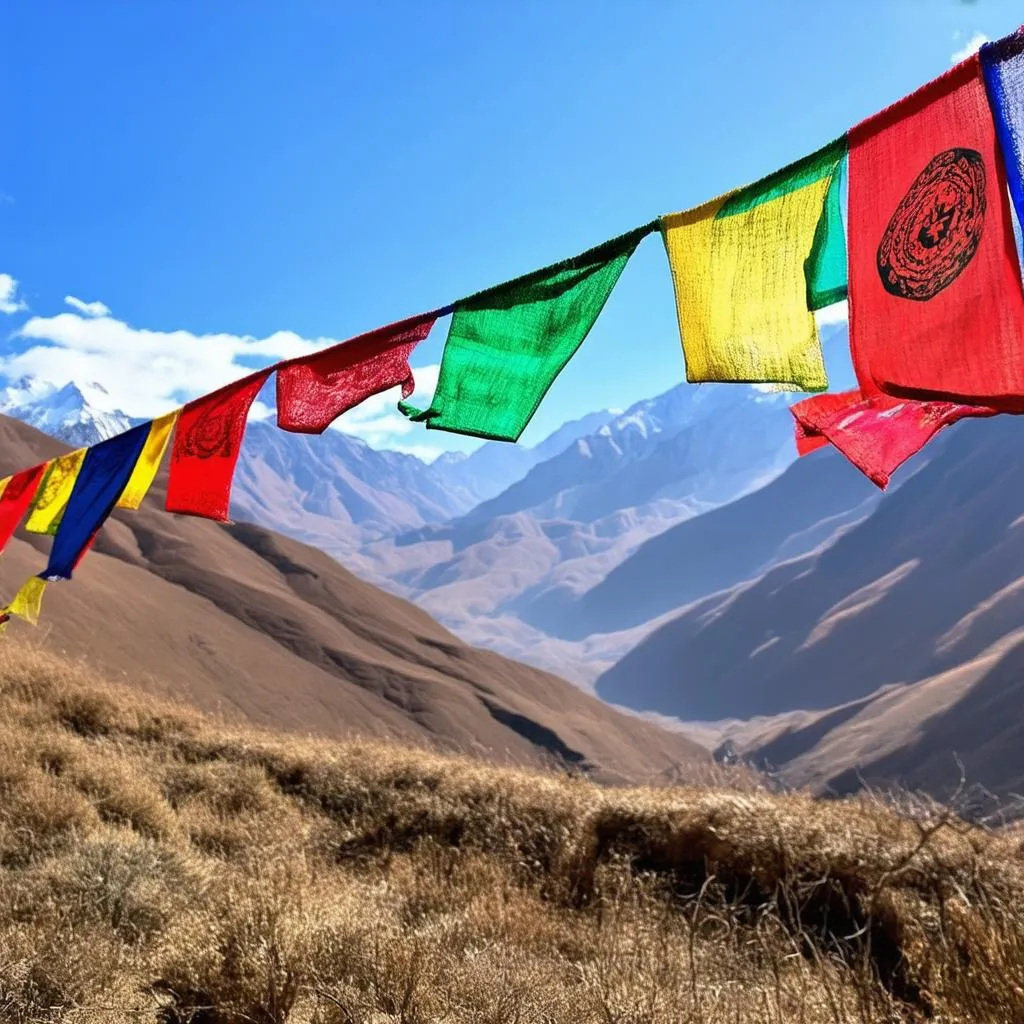“Once in a lifetime, one must visit Tibet,” my grandfather used to say. Back then, I didn’t understand his fascination with this remote land. It wasn’t until I embarked on my own Tibet travel adventure that the truth of his words struck me. Tibet, with its majestic mountains, ancient monasteries, and vibrant culture, isn’t just a destination; it’s a journey for the soul.
Embark on an Unforgettable Journey: Exploring the Roof of the World
Tibet, often referred to as the “Roof of the World,” is a landlocked region in East Asia, known for its breathtaking landscapes, unique culture, and spiritual significance. From the snow-capped peaks of the Himalayas, including the mighty Mount Everest, to the serene beauty of Lake Yamdrok, the region offers an unparalleled experience for nature enthusiasts and adventurers alike.
Discover the Heart of Tibetan Buddhism
Tibet is the heartland of Tibetan Buddhism, and a trip to this spiritual land is incomplete without experiencing its rich monastic traditions. Visit the iconic Potala Palace in Lhasa, the former residence of the Dalai Lama, and marvel at its architectural grandeur. The Jokhang Temple, another significant religious site, is said to house the Jowo Shakyamuni Buddha statue, attracting pilgrims from all corners of the Tibetan Plateau.
 Potala Palace
Potala Palace
Immerse Yourself in Tibetan Culture
Beyond its spiritual side, Tibet offers a glimpse into a unique culture deeply rooted in its ancient heritage. Explore the bustling Barkhor Street, a traditional market in Lhasa, where you can find prayer wheels, Tibetan handicrafts, and traditional clothing. Interact with the friendly locals, savor the flavors of Tibetan cuisine, and witness traditional dance performances to truly immerse yourself in the local way of life.
Planning Your Tibetan Escapade: Essential Tips and FAQs
How to Reach Tibet
Getting to Tibet usually involves flying into Lhasa Gonggar Airport (LXA) from major cities in China like Beijing, Chengdu, or Xi’an. Remember, independent travel to Tibet is restricted, and you’ll need to arrange a tour through a registered travel agency. They will help you obtain the necessary permits, including the Tibet Travel Permit and any other special permits required for specific regions.
Best Time to Visit Tibet
The best time to travel to Tibet depends on your preferences and what you wish to experience.
- Summer (June-August): Offers pleasant weather, ideal for trekking and exploring the high-altitude lakes.
- Spring (April-May) & Autumn (September-October): Provide mild temperatures and clear skies, perfect for sightseeing and photography.
- Winter (November-March): While extremely cold, offers a unique perspective on the region with fewer crowds.
Budget Considerations
The cost of a Tibet trip can vary depending on your travel style, accommodation preferences, and the duration of your stay. Budget-conscious travelers can opt for homestays or guesthouses, while those seeking more comfort can choose from a range of hotels. Meals are generally affordable, especially if you dine at local eateries.
What to Pack for Your Tibet Trip
Packing for Tibet requires careful consideration of the region’s unique climate and altitude. Some essentials include:
- Warm clothing: Layers are key, including thermal underwear, fleece jackets, down jackets, and windproof outerwear.
- Comfortable hiking shoes: Especially important if you plan on trekking.
- Sun protection: High altitude means stronger UV rays, so pack sunscreen, sunglasses, and a hat.
- Medications: Consult your doctor about altitude sickness medication and carry a basic first-aid kit.
- Portable charger: Power outages can occur, so having a backup power source for your electronics is essential.
Frequently Asked Questions about Tibet Travel
- Do I need a visa to travel to Tibet? Yes, in addition to a Chinese visa, you’ll need a Tibet Travel Permit, which your tour operator will arrange.
- Is it safe to travel to Tibet? Yes, Tibet is generally a safe destination for tourists. However, it’s crucial to respect local customs and traditions.
- What is altitude sickness, and how can I prevent it? Altitude sickness is common in high-altitude regions. Acclimatize slowly, drink plenty of water, and consider taking medication as advised by your doctor.
 Tibetan Prayer Flags
Tibetan Prayer Flags
Embrace the Tibetan Experience
Traveling to Tibet is more than just checking off destinations; it’s about immersing yourself in a world steeped in spirituality, breathtaking beauty, and ancient wisdom. From the vibrant tapestry of culture to the awe-inspiring landscapes, Tibet offers a transformative experience that will stay with you long after you’ve left the “Roof of the World.”
For more travel inspiration and resources, explore our website, travelcar.edu.vn, and discover a world of possibilities. Let us be your guide to unforgettable adventures.